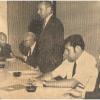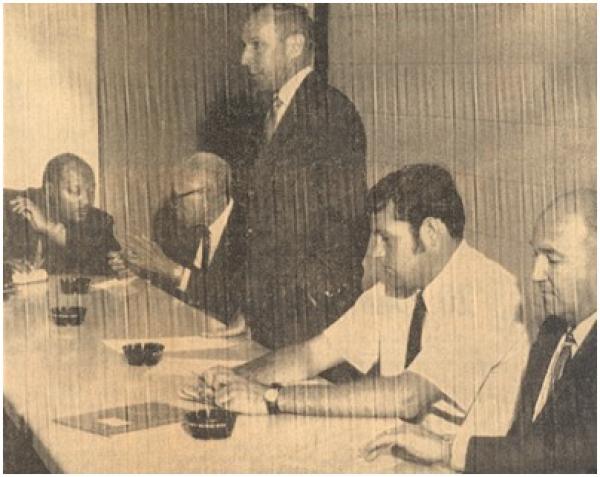NAACP's Goals and Impact
| Grade | 5th Grade | Class | Social Studies | Length of Lesson | 45 Minutes |
| Lesson Title | NAACP's Goals and Impact |
| Unit Title | Civil Rights for Iowa |
| Unit Compelling Question | What did the civil rights look like in Iowa and how have the movements affected our current state? |
| Historical Context: From 1968 to 1976, the Fort Madison NAACP fought plans to widen Highway 61 in a route that would remove many homes owned by Mexican and African Americans who could not buy homes elsewhere in Fort Madison due to discriminatory real estate practices. With help from the national NAACP, the Iowa Department of Transportation was forced to pick a different route for the highway in 1976. This picture was taken during a Highway Commission hearing held in Fort Madison. Virginia Harper, an active member of the NAACP, helped in fighting against the Iowa State Highway Commission to reroute Highway 61 whose original route went through African-American and Mexican neighborhoods. Harper filed a discrimination complaint against the board, claiming that the highway would "disproportionately harm black and Mexican residents." From 1968-1975, she wrote multiple letters, attended meetings and worked with the NAACP and Highway Commission until they agreed to drop the highway plan. Harper is not pictured in the image. |
|
| Lesson Supporting Question | |
| Lesson Overview | Initial discussion on what students know about the NAACP, if nothing, the civil rights movement. Students will write down ideas that will be used later. A short clip of the president of the Iowa-Nebraska Conference will be played as students write down key ideas. Students will then read through and investigate a picture of an NAACP meeting in Iowa and his goals. The worksheet that will be handed out after reading (popcorn reading/group). Students will answer questions about the larger and individual goals of the NAACP and illustrate how Virginia Harper’s actions affected regional infrastructure and challenged de jure segregation. |
| Primary Sources Used |
|
| Resources Needed | https://docs.google.com/document/d/1Lcrv4rj__yU8vfb6avB0PAY6LIOeSe5TFbU1rudeBco/edit?usp=sharing http://www.iptv.org/iowapathways/artifact/naacp-fights-civil-rights |
| Standard | |
| Lesson Target | Students will describe how the NAACP's origin affected Iowa's history.;Students will illustrate and predict the effects of the NAACP on daily life and infrastructure.;Students will identify regional goals of the NAACP and its' challenges to their movement. |
| Lesson Themes | African American Experience, Civil Rights |
|
| Formative Assessment (How will you use the formative assessments to monitor and inform instruction?) |
The formative assessment will be in the form of discussion and what students know from prior knowledge. This assessment should be used to adjust how much time is spent on the introduction, although this should not be the first civil rights unit covered, so the students should know something. |
| Summative Assessment (How does the lesson connect to planned summative assessment(s)?) |
The final assessment, illustrating and predicting the effects of the NAACP through a map and brief summary of the goals of the NAACP, goals, challenges, and practice will broaden students' understanding of how a national issue occurred on local levels and different forms of segregation. |
| Author | Emily Hale | Created | Last Edited | ||||
| Reviewer: Chad Christopher, History Education, University of Northern Iowa | |||||||
| Lesson Plan Development Notes: Teaching Methods, University of Northern Iowa, Fall 2019 | |||||||


